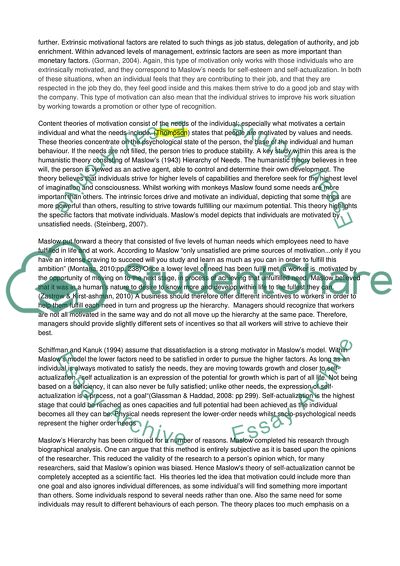Cite this document
(Marlows Hierarchy of Needs Essay Example | Topics and Well Written Essays - 1500 words, n.d.)
Marlows Hierarchy of Needs Essay Example | Topics and Well Written Essays - 1500 words. https://studentshare.org/psychology/1791517-critically-evaluate-theoretical-explanations-of-motivation-that-we-have-learnt-about-in-this-module
Marlows Hierarchy of Needs Essay Example | Topics and Well Written Essays - 1500 words. https://studentshare.org/psychology/1791517-critically-evaluate-theoretical-explanations-of-motivation-that-we-have-learnt-about-in-this-module
(Marlows Hierarchy of Needs Essay Example | Topics and Well Written Essays - 1500 Words)
Marlows Hierarchy of Needs Essay Example | Topics and Well Written Essays - 1500 Words. https://studentshare.org/psychology/1791517-critically-evaluate-theoretical-explanations-of-motivation-that-we-have-learnt-about-in-this-module.
Marlows Hierarchy of Needs Essay Example | Topics and Well Written Essays - 1500 Words. https://studentshare.org/psychology/1791517-critically-evaluate-theoretical-explanations-of-motivation-that-we-have-learnt-about-in-this-module.
“Marlows Hierarchy of Needs Essay Example | Topics and Well Written Essays - 1500 Words”. https://studentshare.org/psychology/1791517-critically-evaluate-theoretical-explanations-of-motivation-that-we-have-learnt-about-in-this-module.


